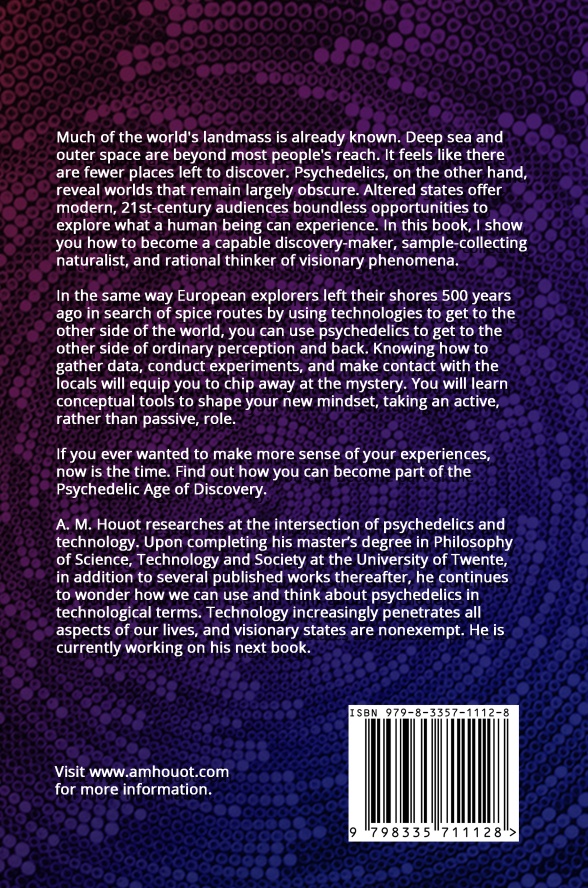#112 What is the Psychedelic Age of Discovery?
The Psychedelic Age of Discovery is a period parallel to the Psychedelic Renaissance. The rebirth of psychedelic research at the turn of the 21st century started our current renaissance, at least in modern, industrialized countries. This renaissance, this idea of investigating visionary compounds that have been used by indigenous peoples for time immemorial, however, seems to gather around a handful of disciplines, namely, anthropology, psychiatry, and neuroscience. Westerners’ interest in psychedelics today is lopsidedly focused on therapeutic applications of these so-called medicines.
Since academics and entrepreneurs are too focused on psychedelics’ broad therapeutic potential, the elephant in the room, the biggest mystery we need to investigate, is the visionary state. We need to seriously and rigorously investigate the visions that these drugs produce. They reveal fantastical things, people, and places to those who consume them. Like explorers of old, we need to sail straight toward these Other Worlds and report what is on the other side of ordinary perception.
I say in my upcoming book, Rise of the Psychonaut: Maps for Amateurs, Nonscientists and Explorers in the Psychedelic Age of Discovery, to be released on February 2nd, 2025:
We have been witnessing a rebirth of psychedelic research since the early 2000s. Due to the fact we are in what many people call the Psychedelic Renaissance, one cannot help but draw comparisons to the European Renaissance that spanned the 15th and 16th centuries. An equally significant age, one that started around the same time and lasted another century or so, was the Age of Discovery. If we are in a Psychedelic Renaissance, and keeping in mind that history regularly repeats itself, it would be reasonable to assume that a parallel set of activities with matching enthusiasm will happen, what I call the Psychedelic Age of Discovery (Houot, 2025, p. 239).
 The European Age of Discovery that spanned hundreds of years provides a historically and anecdotally rich template for us to find our way through psychedelic experiences. We can learn a lot depending on how we frame our intentions. Rather than think of ourselves as sick patients in need of psychedelic medicines to heal something about us, it’s time to consider ourselves to be explorers who use psychedelics as technologies in the same way past explorers used technologies to take them to the other side of the world. Doing so will allow us to think critically and logically about what we experience and to push farther than we currently have. We need a new mindset – in fact, the same one those European explorers had to sail all over the world – to explore psychedelic visions; for example, adopting scientific, technological, innovative, anthropological, and other stances to explore and eventually make sense of the subjective experience afforded by these chemicals. In my book, I discuss what one would need to know to change their mindset into a psychedelic explorer.
The European Age of Discovery that spanned hundreds of years provides a historically and anecdotally rich template for us to find our way through psychedelic experiences. We can learn a lot depending on how we frame our intentions. Rather than think of ourselves as sick patients in need of psychedelic medicines to heal something about us, it’s time to consider ourselves to be explorers who use psychedelics as technologies in the same way past explorers used technologies to take them to the other side of the world. Doing so will allow us to think critically and logically about what we experience and to push farther than we currently have. We need a new mindset – in fact, the same one those European explorers had to sail all over the world – to explore psychedelic visions; for example, adopting scientific, technological, innovative, anthropological, and other stances to explore and eventually make sense of the subjective experience afforded by these chemicals. In my book, I discuss what one would need to know to change their mindset into a psychedelic explorer.
There are many reasons why I don’t have faith, unfortunately, that our intellectual elites will lead this charge. For this reason, I unpack the conceptual tools amateurs and nonscientists will need to reshape their approach and relationship to drugs. Amateurs from all fields have made discoveries and inventions throughout history. The time is ripe for members of the general public to step up and do the same for psychedelic visionary states. If you have ever wanted to make more sense of what you experienced during psychedelic intoxication, I invite you to read my book and hopefully contribute to this budding field of inquiry.
#psychedelicAOD
Houot. A. M. (2025). Rise of the Psychonaut: Maps for Amateurs, Nonscientists and Explorers in the Psychedelic Age of Discovery. Independently published.
